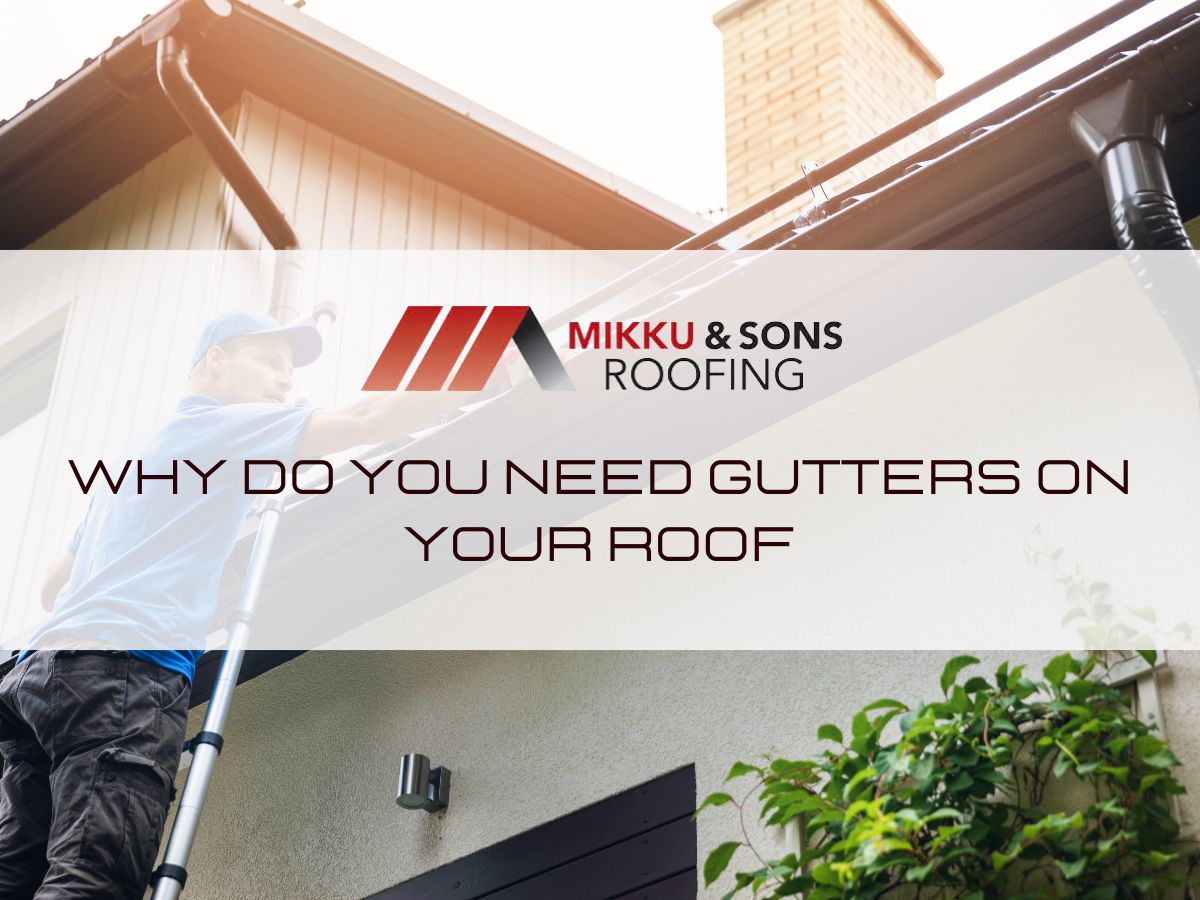
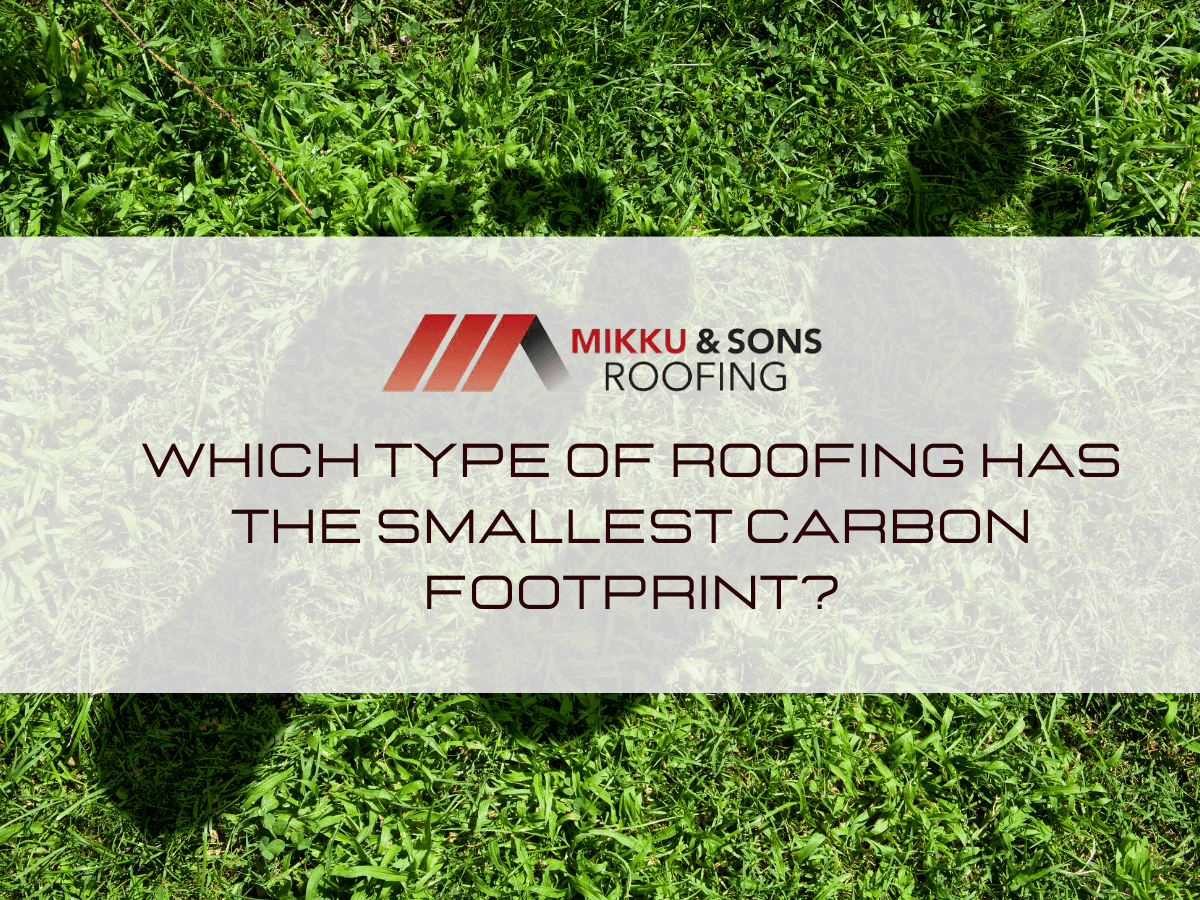
40% of global greenhouse gas emissions can be attributed to the built environment, which is a very concerning figure. It uses one-third of the world's resources and produces millions of tonnes of garbage annually.
Changing to a more sustainable way of living is not an easy decision, and it requires time. If you're a homeowner concerned about your home's environmental impact, using the most eco-friendly roof would be one of the options on your table.
It's safe to assume that if you're interested in green roofing materials, you've already taken steps toward a more sustainable home and way of life. Here is a rundown of which type of roofing has the smallest carbon footprint and why.
The carbon footprint of a roof is the entire amount of greenhouse gases (GHG) emitted by the roof expressed as carbon dioxide equivalent (CO2e). The carbon footprint of a roof is determined by the direct or indirect carbon emissions involved with the manufacture of the roofing materials to their installation on the roof.
Life cycle analysis (LCA): Why it is important
Decision-makers can use LCA to evaluate competing products such as roofing materials and choose the one with the smallest environmental footprint. By considering all aspects of a product's life cycle, LCA prevents burden shifting, which would lessen the environmental impact in one area while raising it in another.
LCA evaluates the entire lifecycle of a product, beginning with its raw material extraction and ending with its final disposal. It's a way to measure the cumulative effects of a product, process, or action on the environment.
LCA pinpoints environmental problem areas in products and materials and provides a baseline for future improvements. Examining the few criteria that qualify it as a roof with a small carbon footprint is necessary for determining which roof has the lowest direct or indirect carbon emissions.
It is important to consider a number of aspects when choosing a roofing material to minimize its effect on the environment. These include:
| Material | Embodied Energy (MJ/Kg) |
| Copper | 44-55 |
| Aluminum | 155 |
| Clay tiles | 6.5 |
| Concrete tiles | 1.2 |
| Ceramic tile | 18.9 |
| Slate | 0.1-1 |
| Steel – corrugated sheet | 79.6 |
| Clay brick | 3.5 |
This is the amount of energy needed to extract, process, and transport the material and deal with waste produced during production. Energy is consumed throughout the construction process, from mining and processing raw materials to the production of building supplies, distribution, and, ultimately, construction itself.
If you want to cut down on your home's energy use and your carbon footprint, you should learn about and factor in embodied energy while making decisions concerning construction or renovation.
Aluminum roofing raises a few eyebrows since the embodied energy varies greatly with different manufacturing methods. Aluminum, which is manufactured in vast quantities through electrolysis, is an example of a material that would have been considered environmentally unfavorable in the past.
Since most of its production relies on hydroelectric power, the amount of energy required to make it is quite small. It's a great sustainable roofing alternative because it lasts a long time and can be recycled when it's done.
| Material | Life expectancy |
| Clay tile | 50 to 100 years |
| Concrete tile roofs | 40 to 75 years |
| Cedar shakes/shingles | 20 to 40 years |
| Composite shingles or tiles | 30 to 50 years |
| Slate | 30 to 100 years |
| Fiber cement shingles | 20 to 30 years |
| Tin | Over 50 years |
| Ribbed metal (with exposed fasteners) | 25 to 40 years |
| Ribbed metal (with concealed fasteners) | 30 to 40 years |
| Standing seam | 30 to 50 years or more |
| Copper and zinc | 100 years or longer |
| Premium asphalt shingles | 20 to 30 years |
| Architectural/ dimensional asphalt shingles | 15 to 25 years |
| 3-tab shingles (properly maintained) | 10 to 20 years |
This is a material's ability to withstand its intended environment throughout its predicted lifespan without incurring damage or requiring excessive care. Over the product's service life, you should calculate its total cost and environmental impact; the lower those numbers will be, the more durable the product is expected to be.
Clay tiles are eco and style-friendly choices for your house. They come in a multitude of colors and styles that you can use to accent or complement your house. Clay tiles are energy efficient, allowing heat to circulate rather than just trapping it, which can lower your energy bill in regards to cooling in hot regions or in the summer months.
Also, while these tiles aren't particularly cheap to install, they are easily replaceable when damaged, meaning there isn't much chance you'll ever need to do a full replacement, only minor repairs and touch-ups throughout the life of your rooftop. Before you invest in these tiles, you'll want to have an inspection done to make sure your roof can handle the weight, additional support structure may need to be added in some cases.
In most cases, the overall savings you'll get with this tile over the long run will likely offset the costs of any work needed.
Boye Fajinmi, Co-Founder and President, TheFutureParty
Recycling refers to reprocessing waste into useable products, while reclamation refers to the process of reclaiming something that had been discarded as useless. Some materials may be recycled more simply than others, and there are recycling centers where they can be sent again for use.
A product's recyclability can be influenced by its design in a number of ways, including the materials used and the degree to which it is constructed in modular parts. The metals steel and aluminum, for instance, can be recycled repeatedly.
If you are environmentally concerned, you can opt for recycled shingles. They can be a green roofing product and are quite affordable. These shingles are perfect alternatives to expensive slate roofs. They are durable and can last for over 50 years.
These roofing materials also help the home use as little energy as possible. These types of roofs can help you save on your monthly bills. Their simple design will allow you to use fewer materials. Such is beneficial to the environment. Most raw materials are organic, sustainable, and eco-friendly. They can reduce waste and carbon footprints. Something that is vital in creating a better world for future generations.
Laura Martinez, Consultant and Content Writer, PersonalityMax
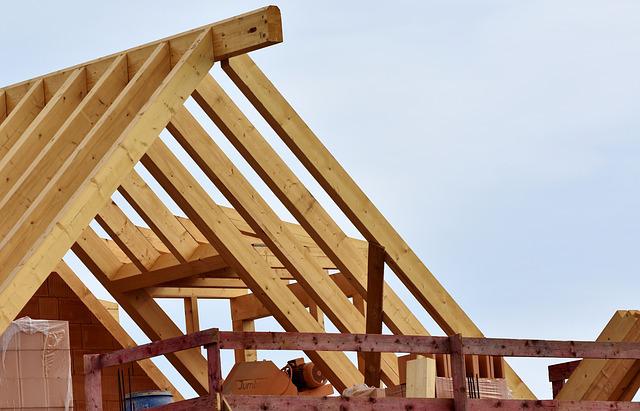
The quest for eco-friendly substitutes has been strong for quite some time. Due to global warming and the subsequent need for improved materials that can endure the destructive elements of nature, the demand for sustainability has skyrocketed.
If a green or living roof is the extent of your knowledge about sustainable roofing, you may be shocked to learn of the many other options available, even with the current roofing options.
Most contemporary homes have asphalt shingles on their roofs. They may be fixed or replaced with little effort and cost little money.
When most people think about asphalt shingle roofing, the phrase "environmentally friendly" is hardly the first thing that springs to mind. Recently, there has been a shift in residential construction toward eco-friendly and sustainable practices, likely as a result of rising public awareness of international issues.
As a byproduct of refining crude oil, asphalt is not the most eco-friendly or long-lasting option. What makes asphalt shingle roofing eco-friendly is often overlooked, even though it is one of the more widely used eco-friendly home components.
You don't have to worry about your old asphalt shingles being dumped in a landfill if you're planning on repairing your roofing system. This is because, with the help of innovation, asphalt shingles may be reused and recycled.
Approximately 11 million tons of asphalt shingle trash is generated annually in the United States, according to the Environmental Protection Agency (EPA). The tear-off procedure for asphalt shingles generates ten million tons of garbage annually, all of which homeowners generate, while the other million are scraps from making the shingles themselves.
Asphalt shingles are not commonly recycled and are not biodegradable, although they are used by some businesses and governments anyway. Materials such as fiberglass, tar, and other petroleum byproducts are combined with paper and minerals to create these.
Considering their dependence on petroleum, they cannot be considered environmentally friendly. The fact that they are derived from fossil fuels makes them unsustainable, and they also have a disintegration time of up to 300 years as well.
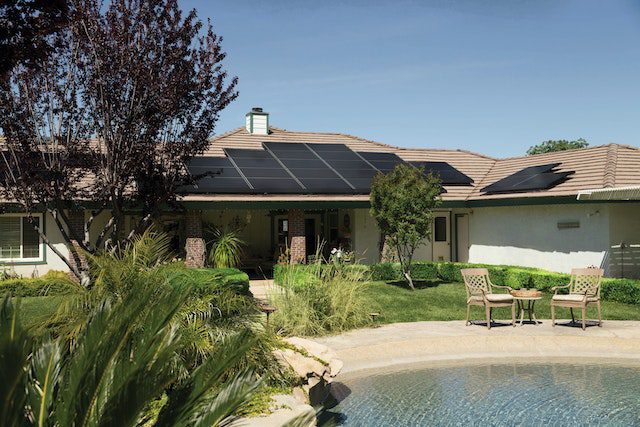
Solar panels are constructed using non-hazardous materials (aluminum, glass, and sand) and have a clean production process. Roofing materials that can be used to generate solar energy include solar panels and tiles.
To generate power, solar roofing systems rely on the sun's rays. It's a green roofing material that can significantly reduce your monthly energy costs.
They both produce no emissions since they use clean, renewable energy sources like the sun. Because of the sun's importance in solar energy production, this type of roof is practical only in sunny climates.
Unlike solar panels, which can be installed on any old roof, solar tiles feature solar cells embedded in more conventional roofing materials like asphalt shingles or metal, which adds up the final carbon footprint of the entire roof from the different materials.
They can also be recycled after they wear out. Glass, metal, and electronic waste recycling are all well-established sectors that may easily handle solar panels and other components of solar power systems.
It is, however, highlighted that the environmental costs associated with producing solar panels may be significant since caustic chemicals like sodium hydroxide and hydrofluoric acid are used in the fabrication process, along with water and energy, the generation of which contributes to greenhouse gas emissions.
Some other roofing methods we have discussed won't work if your home or building has a flat or low-sloped roof. Membrane roofing is a popular option for homes with flat or low-sloped roofs.
EPDM, a synthetic rubber sheet, is widely used to produce roofing membranes. It's sturdy, cheap, light, and simple to set up and fix if something goes wrong. The taped or glued seams mean it only has a 5- to 15-year lifespan and leaks easily.
Membrane roofs are vulnerable to tears because they are so thin, and they are vulnerable to leaks which can occur anywhere, including at the joints where individual membrane sheets are joined.
Roofing membranes made of PVC and TPO are more expensive but last longer than other types. Hot-welded air seams on single-ply roofing membranes make them nearly twice as durable as EPDM rubber, but these membranes are also more expensive to install and buy.
In comparison to PVC, TPO, and asphalt roofs, EPDM roofing has a smaller impact on the environment. EPDM's Global Warming Potential (GWP) is only 6.93 kg CO² per square foot.
While metal roofing isn't usually considered a "green" option, it could end up saving you money and reducing your carbon footprint in the long term. Metal roofs are increasing in popularity due to their many practical advantages and their ability to lessen an individual's impact on the environment.
Traditional roof tiles offer inadequate protection from the elements and heat loss, leading to soaring utility bills. However, metal roofing leaves hardly any carbon impact, can last twice as long as tiles, and is more energy efficient.
The carbon footprint of metal roofing
In recent years, the environmental impact of each roof choice has been a major factor in the decisions of both big businesses and domestic property owners alike. Metals are, however, a great choice for an environmentally friendly roof.
Metal roofing is not only recyclable at the end of its life but also constructed from recycled resources. The time and energy spent mining for raw materials to make this action greatly cuts down new products.
Moreover, it can help cut down on trash that ends up in landfills. Shingles take up to 300 years to degrade in landfills than metal roofs.
The fact that metal roofing is a sustainable, eco-friendly alternative with a very low carbon footprint over the course of its lifetime is one of the most significant advantages associated with making that choice.
Unlike asphalt shingles, metal roofs can be recycled easily; some even contain as much as 40 percent recycled content in their compositions. When the time comes to replace the roof, the metals employed in its construction can be recycled again.
Since metal can be recycled so easily, the mining and processing of new materials release less carbon dioxide. Very little trash is left over, even after a metal roof has been in place for fifty years.

Metal roofing is widely regarded as the most eco-friendly and long-lasting option. Metal roofing may be recycled indefinitely and typically contains 25%-40% recycled content. Many homeowners and homebuyers are placing a premium on eco-friendly living in their house purchases and renovations as a result of rising awareness among customers about the importance of sustainable practices.
Those in the home repair and building industries are looking for reliable alternatives that will fulfill the strictest criteria of eco-friendliness and sustainable living to satisfy the public's need for conservation, recyclability, and sustainability. Even among the most reluctant homeowners and buyers, metal roofing is one of the many green choices for home improvements that are getting a lot of traction.
Since quality metal roofing weighs only about half as much as asphalt roofing, lighter frames can be used in newly constructed homes. On the other hand, asphalt roofs may hold hundreds of gallons of crude oil and, depending on the roof's pitch, need to be replaced every 12 to 20 years.
More and more homeowners are looking for eco-friendly building supplies, but it can be tough to tell which ones are best. Metal roofs have an established track record of exceptional efficiency and durability.
When you choose a metal roof, you won't have to worry about making a replacement decision for at least another 15 years. Because of its adaptability, it can match almost any building design.
This is because it requires hardly any maintenance over its 50-year lifespan.
It holds up well in the face of torrential downpours, gale-force winds, and a barrage of blows.
Metal is an incredibly robust and long-lasting material, standing up well to the elements, rust, wind, and scratches. Its great weather resistance can help you save money on roof repair and maintenance, and its long lifespan means fewer resources used up in production.
Metal roofing has been demonstrated to outlast more conventional materials (such as tiles and shingles) over time. The majority of metal roofs can retain their original state for up to half a century.
Because replacements aren't necessary as often, it's better for the environment than other options because it saves resources.
Metal roofs reflect the most sunlight of any roofing material. Even when painted, the reflecting characteristics of metal roofs aid in reducing the warming impacts of the sun, resulting in a 20 percent savings on cooling expenditures for the average home.
Steel roofs, even when coated to blend in with the exterior of your home, are highly reflective, reducing the amount of heat your roof absorbs from the sun. It has been shown that entire communities can experience a lesser impact from urban heat islands if they have multiple metal roofs.
In addition to its durability, metal roofing is also environmentally friendly because of its low energy use. It will help keep the house cool and make the most of your air conditioning.
Are metal roofs the most eco-friendly option?
Roofs made of metal are quite energy-intensive to produce. They still look nice and last a long time, and many of them are made in part from recycled materials or can be recycled when they finally reach the end of their useful life.
Metal roofs can only be considered so in the long run when talking about eco-friendliness. This is because they have high embodied energies, but once they are installed, they have little carbon footprints, and they can last for long periods of time without replacement. In addition, metal roofs are manufactured with 40%recycled material, and when they need to be replaced, they can be recycled and reused.
While the high heat conductivity of metal makes it effective at reflecting some sunlight and reducing the amount of heat gained by a building's roof, metal roofs nevertheless provide sufficient insulation. Technically speaking, metals are not sustainable because they are forged from earth-mined materials.
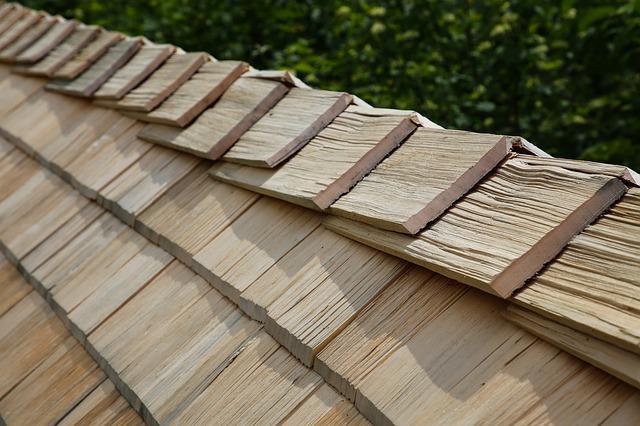
At first glance, wooden shingles might not be the intuitive choice for the ecologically minded, but let's take a deeper look. Not only can timber actively reduce carbon dioxide emissions during growth, but it also makes for a great replacement for more energy-intensive materials like concrete or steel in building, drastically lowering greenhouse gas emissions from that sector of the economy.
As a matter of fact, using timber instead of bricks can cut carbon emissions by an average of ten tonnes, and using timber instead of one cubic meter of concrete can save one tonne of carbon dioxide emissions.
The carbon footprint of timber
Increased demand for trees would result in more trees being planted, reducing carbon in the environment and producing cleaner, safer air. This is only true; however, if the timber industry is sustainable, meaning that for every tree cut down for timber, another tree is planted to maintain a balance.
While it's great that wood is in such high demand, this boon has a potential downside if the carbon emissions from lumber production outweigh the carbon sequestered by forests using wood.
Evaluating the timber industry's potential for cutting down on greenhouse gas emissions requires taking a close look at the carbon footprint of timber products.
Compared to other construction materials, such as concrete, metal, or plastic, timber leaves a much smaller carbon footprint because of the low energy needed to extract the basic ingredients. Planting trees is good for the planet and helps reduce timber's carbon footprint.
Scientists refer to trees as "carbon sinks" because of their ability to absorb carbon from the atmosphere and store it in their wood, plant tissue, and soil. Because of their ability to take in large quantities of carbon dioxide from the air, forests play a crucial part in the global carbon cycle.
The largest contributor to timber's carbon footprint is transportation. Cutting and curing timber and using it in the building requires very little energy and only the most basic equipment. Direct and indirect emissions combine to make up the total for timber transport.
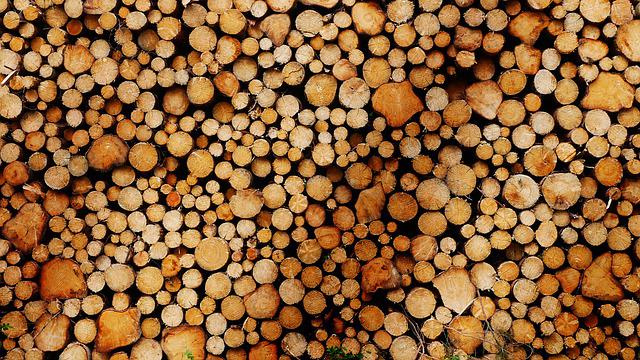
Trucks hauling timber typically consume more fuel than the normal truck since they must travel longer distances through more challenging terrain, such as rural roads, mountainous areas, and graveled forest roads. Timber lorries have a shorter lifespan than regular road haulage vehicles because the rugged terrain greatly strains the engines.
In addition, frequent heavy loads on minor public roads leading to lumber forests cause them to deteriorate quickly and necessitate frequent maintenance. All of these increase the need for timber lorry production and maintenance as well as road maintenance, hence more greenhouse gases are produced by moving lumber.
Using wood shingles has the following advantages:
Cedar's inherent insulating properties come from its "loose" cell structure, making it ideal for use in green roofing. Because your roof is made of natural cedar, it will keep the temperature of your attic lower in the summer and higher in the winter.
Other roofing options necessitate substantial fossil fuel expenditures for both the original acquisition (mining of metals, extraction of oil) and the transformation of raw materials to finished products. For green roofing, the process of turning cedar trees into shingles is time-consuming but not energy-intensive; the trees not only provide oxygen but also remove carbon dioxide from the air and reduce your need for fossil fuels for heating.
Timber has a significantly more sustainable interaction with the carbon cycle than steel or any manufactured building material.
Cities and suburbs often experience warmer temperatures than their more rural neighbors. Most modern building exteriors are highly impermeable and have a low solar reflection. Also, they are typically constructed from high-density materials that take in plenty of heat and give it off slowly.
The urban heat island effect is exacerbated by heat absorption by concrete, asphalt, and other paving materials, although green roofs can mitigate this problem. A green roof consists of a synthetic waterproof membrane and a growing medium, typically soil and inorganic materials.
By transforming rooftops into veritable gardens, living roofs provide homeowners with a novel and environmentally responsible roofing choice. Green roofs, often called living roofs, are roofs covered in grass or other vegetation, preferably indigenous species, and can range from being completely grass-free to being completely overgrown with vegetation.
Green roofs have several advantages, such as preventing rainwater runoff and increasing energy efficiency, but they also require regular maintenance and can be costly to build. They serve to filter the air, lower the temperature, and slow the pace of water erosion.
The house's foundation will also require more (and more costly) support to accommodate the new load. Additionally, green roofs are very heavy and need to be supported by an additional framework, and the membrane they require is made from petroleum products.
Green roofs mitigate the heat island effect caused by the accumulation of heat from the ground and the sun on concrete, asphalt, and other building materials, in metropolitan environments.
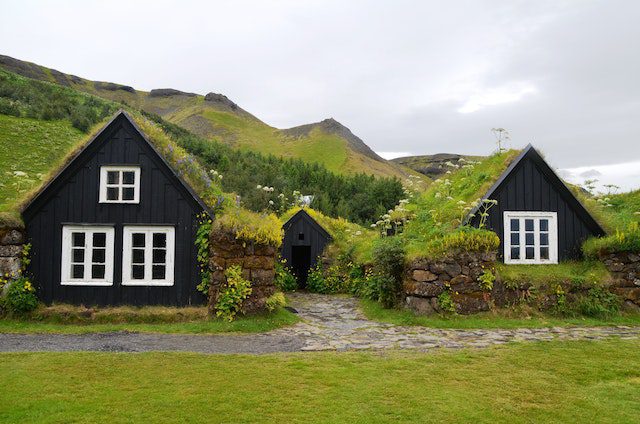
A green roof is a roof that is partially or completely covered with vegetation and a growing medium, planted over a waterproofing membrane. Green roofs provide excellent insulation, reduce energy consumption, and lower heating and cooling costs. They also improve air quality, reduce noise pollution, and help to mitigate the heat island effect. Green roofs can also extend the life of a roof by protecting it from sunlight, wind, and rain. They are also attractive and can create an oasis in an urban environment.
Neil Platt, Director, Emerald Home Improvements
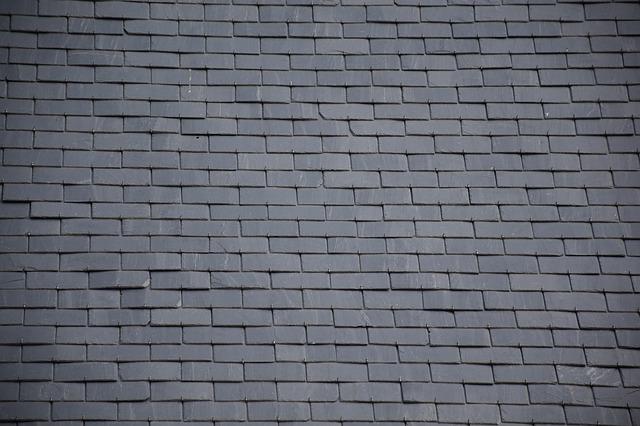
More and more households are interested in sustainable roofing to lower their carbon footprint. Sustainable roofing helps homeowners lower their carbon footprint by using materials with a smaller negative effect on the environment.
Being a mineral, natural slate's durability and eco-friendliness make it an easy topic of conversation.
Slate roofs: The best ecological option
Natural slate will continue to be eco-friendly throughout every phase of its lifespan. This has made it one of the best natural options for eco-friendly construction.
Slate has a small carbon footprint because of its easy and efficient manufacturing method. The mineral composition of slate ensures that it is entirely natural.
Natural slate has a long lifespan and may be recycled simply after its usefulness has ended. As the most resilient roofing material, slate can last for over a century.
Natural slate only goes through the procedures of extraction and processing; therefore, it releases no chemicals. Slate is an eco-friendly option because it may be used without the need for any synthetic or chemical ingredients.
Natural slate is one of the most eco-friendly building materials available for a variety of reasons. Instead of using fiber cement for a roof, natural slate can save up to 6.2 tons of CO2 emissions.
Among roofing options, slate has the lowest embodied energy because it is a natural product. Since it has an embedded carbon value that is no higher than 16% of that of other roofing materials, it is an excellent option to go with. Slate roofing is quite effective against heat, making the interior of the house considerably more comfortable.
The Inventory of Carbon and Energy, which evaluates the amount of energy and carbon in building material, found that natural slate had the smallest footprint. The production of other materials is more time-consuming and harmful to the environment, such as ceramic tiles, which necessitate a great deal of energy.
Roofing using slate is one of the greenest choices available. It has many positive effects on the environment, as detailed by the National Slate Association:
| Tiles | C02 per kg |
| concrete tiles | 0.19kg of CO2 per kg |
| clay tiles | 0.43kg of CO2 per kg |
| natural slate | 0.005 and 0.054kg of CO2 per kg |
When considering the effects on the environment, natural slate is the finest option for roofing material. Slate is the most environmentally friendly roofing option because it is made entirely from natural resources and uses the least amount of energy in its production.
The manufacturing methods of other products are far more intricate, and as a result, they have a greater ecological footprint. To produce zinc, for instance, requires a substantial quantity of electricity.
Slate is formed entirely from natural processes over millennia; it is chemical-free and environmentally friendly compared to other roofing options. The use of slate, then, is highly recommended for those concerned with their environmental impact.
As an engineer and a home-improvement business owner, I can attest that slate is a popular low-carbon footprint option for roofs. Slate is a natural stone that is both durable and attractive. It is also one of the most environmentally friendly roofing materials available, as it is 100% recyclable and requires no chemicals or other synthetic materials to produce. In addition, slate roofs have a very long lifespan, often lasting for centuries with proper maintenance. For these reasons, slate is considered an excellent choice for anyone looking for a green roofing option.
Ludovic Chung-Sao, Lead Engineer & Founder, Zen Soundproof
The argument on the sustainability of slate:
As much as slate is naturally used as-is without any in-between processes with the least carbon footprint, there are a few arguments on the sustainability of slate. Even though slate is beautiful and exceptionally long-lasting, it is also highly expensive, heavy, and requires a lot of energy to mine, manufacture, and transport.
Slate roofing is heavy; thus, it requires more support than other roofing types, which need more materials. If you wish to install a slate roof, you would have to deal with the concern of your roof's ability to hold it.
It is argued that concrete roofs are sustainable because locally sourced sand, cement, water, and iron oxide pigments are the building blocks for concrete roof tiles. However, for every tonne of concrete made, an equivalent quantity of carbon dioxide is released into the atmosphere making the concrete industry the second largest contributor to global warming.
Quarrying the components necessary to manufacture concrete can be harmful to local surroundings, in addition to releasing enormous volumes of CO2. In addition, transporting concrete tiles can continue to result in a greater quantity of carbon emissions.
Recycled asphalt shingles are growing in popularity in the United States as more and more states adopt their use in the construction or maintenance of highways. Asphalt shingles recycled into new asphalt are a common component in pavements, roads, and other roofing products.
Minnesota's municipal government has elected to construct bicycle and hiking paths out of recycled asphalt shingles. In addition, Georgia has mandated that 5% of all road and paving mixtures be made up of asphalt reclaimed from industrial waste.
Even if asphalt shingles get a poor name for being less environmentally friendly than certain other roofing materials, at least you know the waste from your home's tear-off will be put to good use. By reusing asphalt shingles, businesses like construction and transportation can save a lot of money, minimizing both their expenses and carbon footprint.
